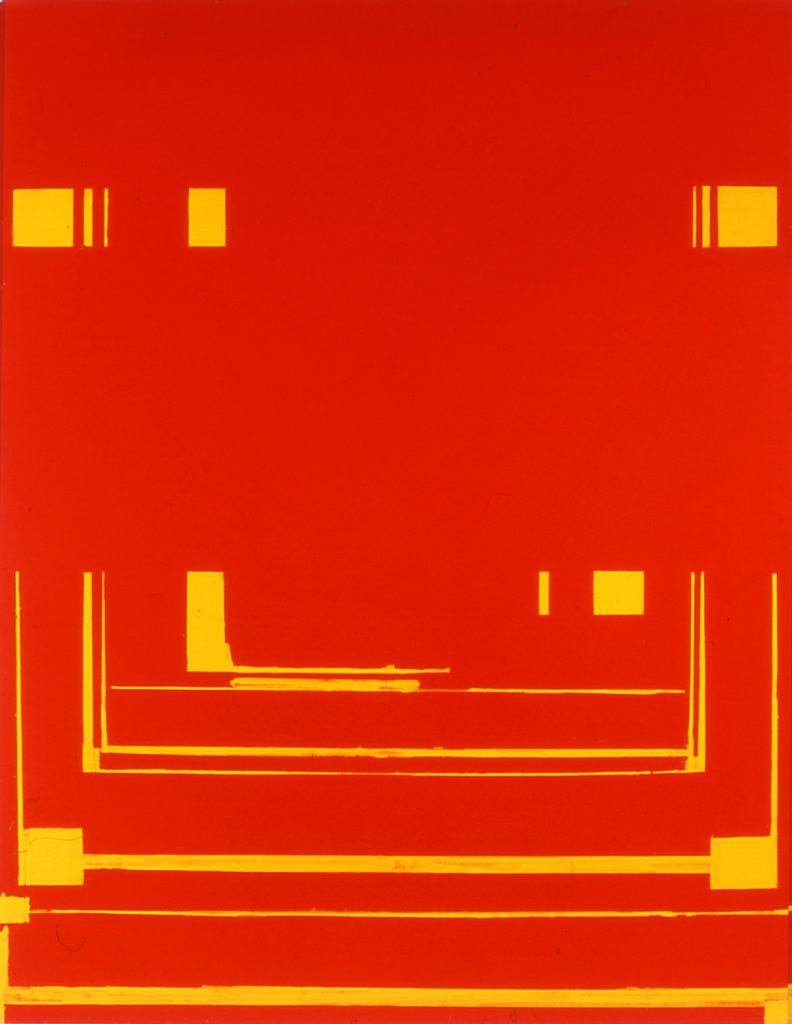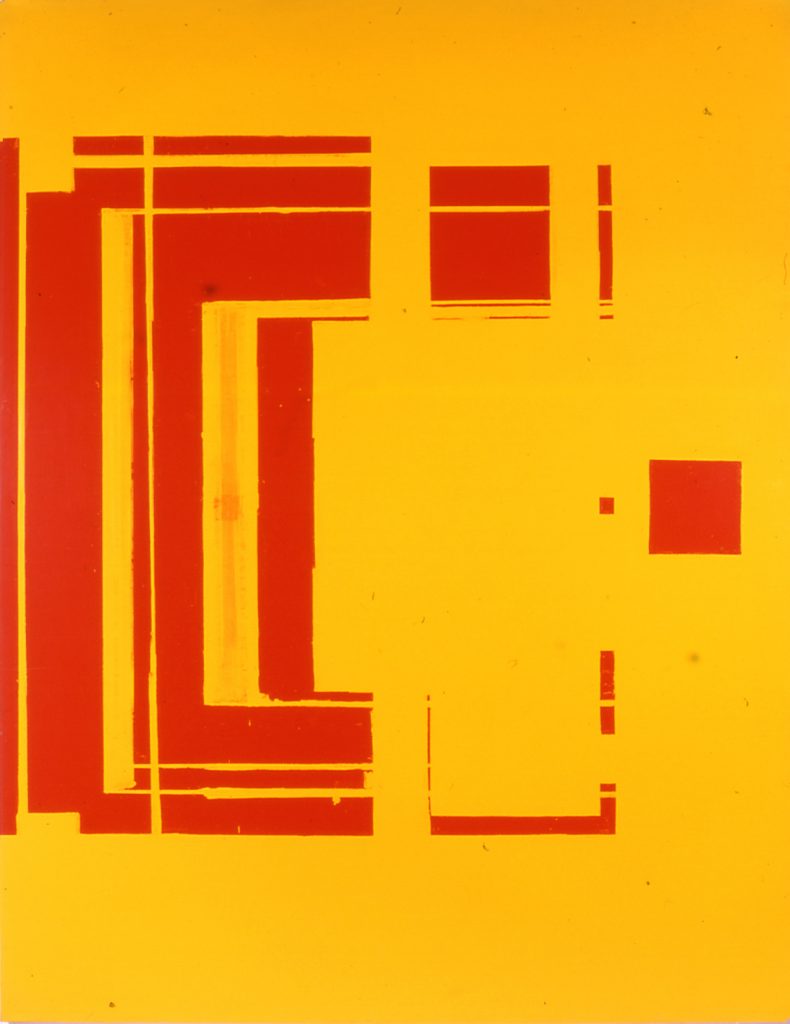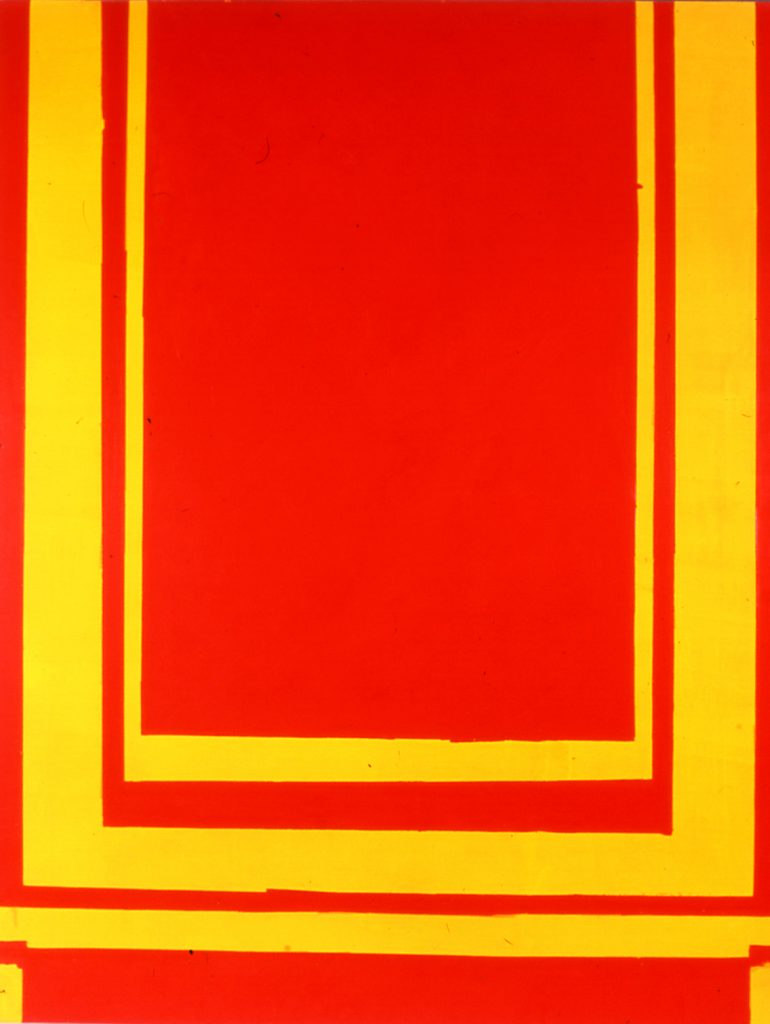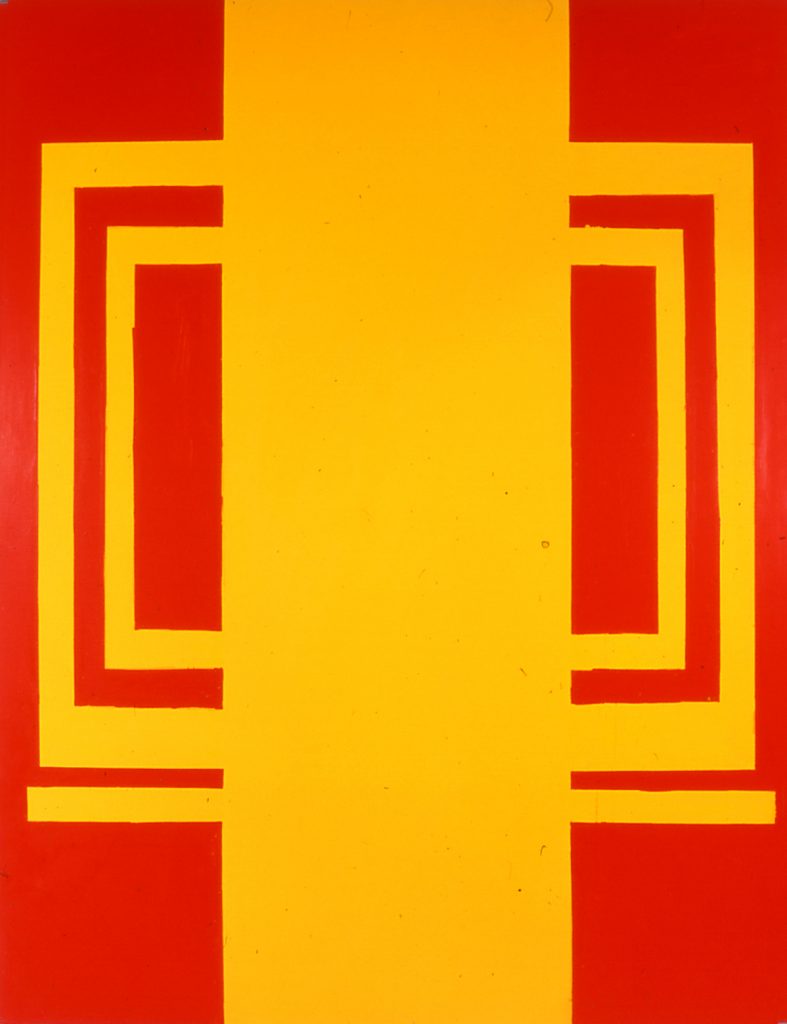(2002) The starting point for these paintings was a series of sketches made during the Gulf War conflict in 1991. I was thinking of a fixed position inside a military bunker, looking out on four views in each direction. There is the anticipation of danger, but the landscape is arid and still. The fixed scene brands itself on the retina in the intense desert heat- similar to the after-image experienced when eyes are quickly shut. I wanted a direct, harsh, and aggressive colour relationship.
During the Gulf War a 3D computer model of Iraq was constructed through information retrieved by military satellites. This virtual Iraq was utilised by hi-tech weapons to navigate around the territory to destroy marked targets. Computer simulations, mental maps, fictional spaces and physical terrains have fed into these paintings, and have been distilled and merged in the process. The end result is like a Tetris arrangement, where component blocks slot together on a plane, colours compete and force alternative readings of the space. The geometric grid permeates the modern world on many levels- dominating architecture, advertising, microprocessor design and digital imaging. I have tried to reinforce these structures in this series.
The paintings reflect the imposition of an order, its maintenance, and its inevitable decline. The modern impulse to structure, map, and delineate is undermined by an erosion that de-stabilises, such as the natural mark of time on man-made structures, the ‘precision-guided missile’ missing its target, or the potential chaos of a computer virus on digitally stored data. Paint handling varies from precision, echoing the existing composition, to fluid gestures that introduce an organic complexity within the structured bounds of the painting. Harsh edges are nudged, chipped and gradually replaced through successive applications of paint.
The aim has been to create a charged, dynamic relationship between geometric purity and the organic unpredictability of natural events.



